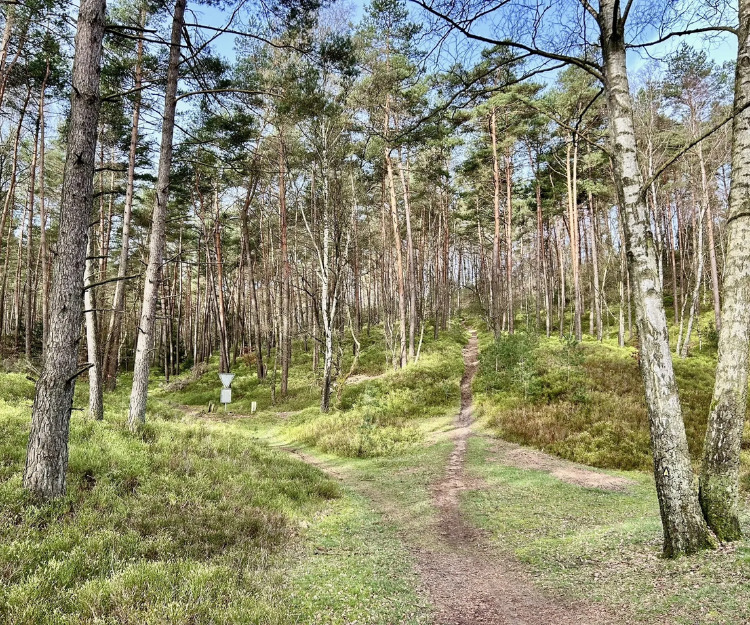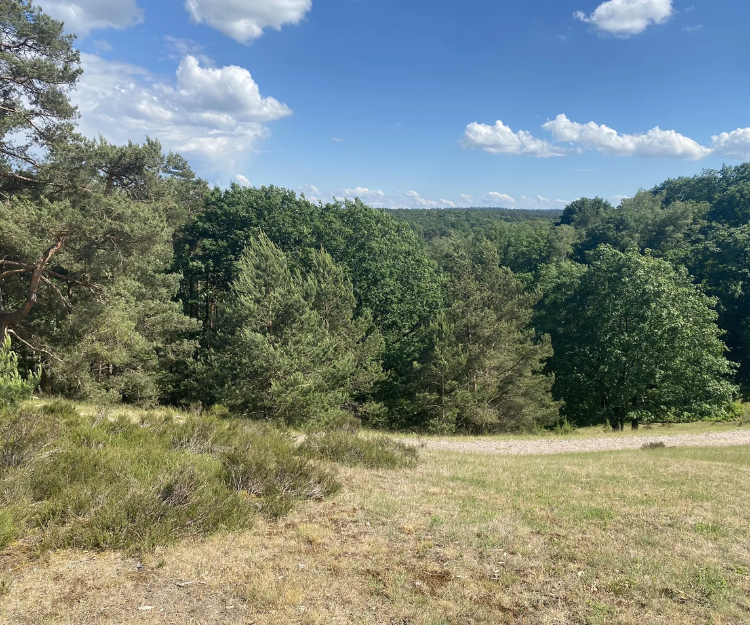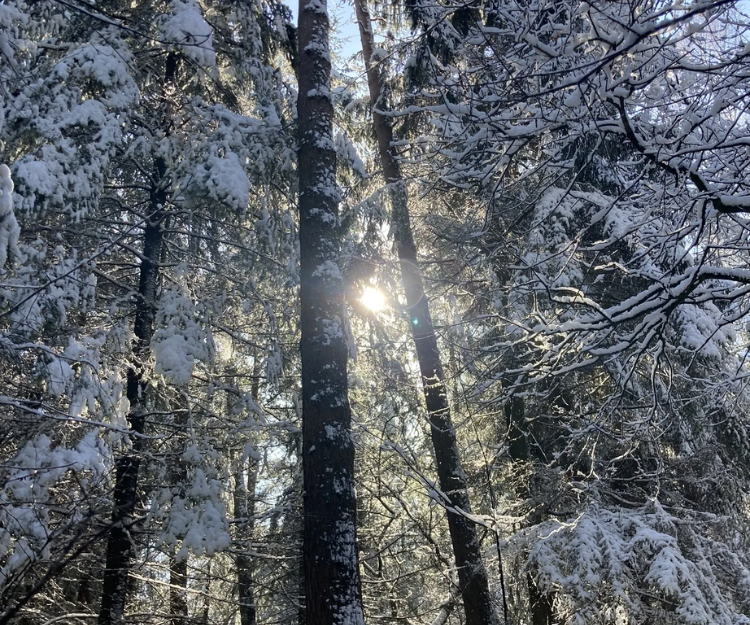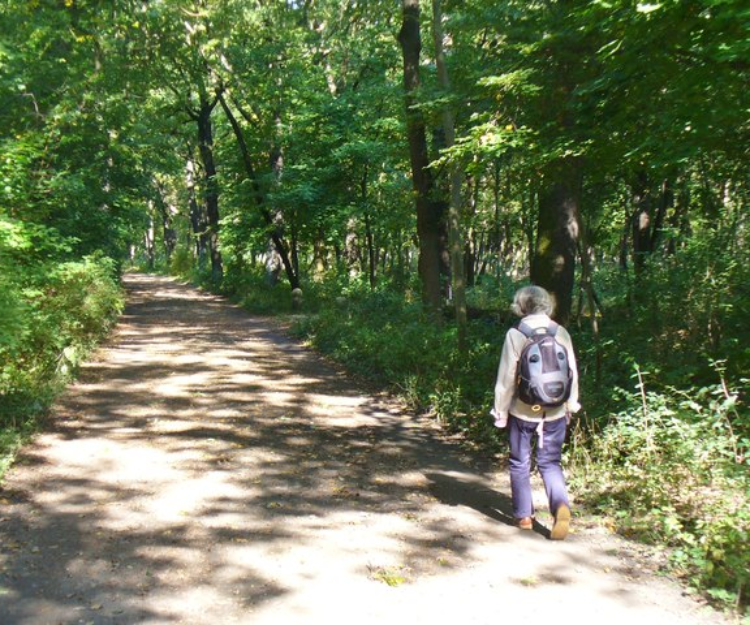
Harburger Berge, also known as the Harburg Hills, is located in the southern part of Hamburg, Germany. This hilly area extends into the borough of Harburg and is part of the larger Hamburg Metropolitan Region. The Harburg Hills are known for their scenic landscapes, wooded areas, and natural beauty, making them a popular destination for outdoor activities such as hiking and cycling. The region includes various nature reserves and parks, offering a green and tranquil escape from the urban environment of Hamburg.

The Harburger Berge, or Harburg Hills, are a natural geological formation, so they did not "appear" in a specific year in the sense of being constructed or discovered. Instead, they are a result of natural geological processes that have occurred over millions of years. The hills are part of the Northern German Lowlands and have been present since prehistoric times. There is no specific year of appearance; they have existed as part of the Earth's landscape for a very long time.


The Harburger Berge, being a natural geographic and geological formation, were not invented by anyone. They are a result of natural geological processes, such as erosion and sediment deposition, that have shaped the Earth's landscape over millions of years.
Here's more detailed information on the Harburger Berge:
Geology and Formation:
The Harburger Berge are part of the Northern German Lowlands and were formed during the last ice age, known as the Weichselian glaciation, which ended about 10,000 years ago. The landscape was shaped by glacial and post-glacial processes, including the movement of ice sheets and the subsequent deposition of materials such as sand, gravel, and clay. This has resulted in the rolling hills and valleys characteristic of the area.
Location and Extent:
The Harburger Berge are located in the southern part of Hamburg, extending into the borough of Harburg and partially into the district of Lower Saxony. They cover an area of approximately 155 square kilometers and reach elevations of up to about 155 meters (509 feet) above sea level, with the highest point being the Hasselbrack hill.
Natural Environment:
The region is known for its diverse flora and fauna, with large areas of forested land, heathland, and open meadows. The mixed forests predominantly consist of beech, oak, and pine trees. This varied landscape provides habitat for numerous species of plants and animals, making it a significant area for biodiversity.
Recreational Activities:
Harburger Berge is a popular destination for outdoor enthusiasts. The area offers numerous hiking and biking trails, with some trails providing scenic views of the surrounding countryside. The Heidschnuckenweg, a well-known long-distance hiking trail, passes through this region. Additionally, there are opportunities for horseback riding, bird watching, and nature photography.
Cultural and Historical Significance:
While the Harburger Berge are primarily valued for their natural beauty, they also have cultural and historical significance. Throughout history, the area has been used for various agricultural purposes, and there are several historical sites and landmarks, including old farmsteads and remnants of early settlements.
Conservation Efforts:
Due to its ecological importance, parts of the Harburger Berge are designated as nature reserves and protected areas. These conservation efforts aim to preserve the natural landscape, protect wildlife habitats, and promote sustainable land use practices.
The Harburger Berge are a naturally occurring set of hills with a rich geological history, diverse ecosystems, and numerous opportunities for outdoor recreation and appreciation of nature. They are not an invention but rather a natural feature of the Earth shaped by millennia of geological processes.

The name "Harburger Berge" comes from the geographical location and administrative district where these hills are situated. Here's a breakdown of the name:
1. **Harburger**: "Harburger" refers to the borough of Harburg. Harburg is a district within the city of Hamburg, Germany. It is located in the southern part of Hamburg and includes suburban and rural areas.
2. **Berge**: "Berge" is the German word for "hills" or "mountains". It denotes the hilly nature of the landscape in this region.
"Harburger Berge" translates to "Harburg Hills" in English. The name specifically identifies these hills as being located within the administrative boundaries of Harburg, which is part of the larger city of Hamburg. It's a straightforward naming convention based on the geographical and administrative context of the area.




The Harburger Berge (Harburg Hills) in Hamburg are highly regarded by hiking enthusiasts for several compelling reasons:
1. **Scenic Trails**: The region offers a variety of well-maintained hiking trails that wind through picturesque landscapes. Hikers can enjoy expansive views of rolling hills, lush forests, and open meadows. The trails often lead to viewpoints that offer panoramic vistas of the surrounding countryside.
2. **Varied Terrain**: The terrain in Harburger Berge is diverse, ranging from gentle slopes to more challenging ascents. This diversity caters to hikers of different skill levels and preferences. Some trails traverse through dense forests, while others lead through open fields and heathland, providing a mix of experiences.
3. **Natural Beauty**: The area is known for its natural beauty and tranquility. Hikers can immerse themselves in the peaceful surroundings, away from the hustle and bustle of urban life. The lush greenery, seasonal wildflowers, and occasional wildlife sightings add to the charm of the hiking experience.
4. **Accessibility**: Despite its rural setting, Harburger Berge are easily accessible from Hamburg city center and surrounding areas. There are public transportation options and well-marked trailheads, making it convenient for day trips or weekend getaways.
5. **Cultural and Historical Sites**: In addition to natural attractions, the region boasts cultural and historical landmarks. Hikers can explore ancient farmsteads, historical sites, and remnants of past settlements along the trails, adding a cultural dimension to their outdoor adventure.
6. **Conservation Efforts**: Parts of the Harburger Berge are protected as nature reserves, ensuring that the natural environment and biodiversity are preserved. This commitment to conservation enhances the quality of hiking trails and ensures sustainable enjoyment of the outdoors.
The Harburger Berge provide a rewarding hiking experience characterized by scenic beauty, diverse terrain, accessibility, and a blend of natural and cultural attractions. Whether for a leisurely stroll or a more challenging trek, hikers find plenty to appreciate and enjoy in this natural oasis near Hamburg.





The Harburger Berge are suitable for hiking throughout the year, offering different experiences and sights depending on the season:
1. **Spring**: Springtime brings blooming wildflowers, budding trees, and vibrant greenery. The weather is usually mild, making it an ideal time for hiking as nature awakens from winter.
2. **Summer**: Summer in the Harburger Berge is characterized by longer daylight hours and warmer temperatures. The hills are lush and green, and the trails are often dry and accessible. It's a great time for longer hikes and enjoying the full beauty of the landscape.
3. **Autumn**: Autumn brings a spectacle of colors as the leaves of deciduous trees turn shades of red, orange, and yellow. The cooler temperatures make hiking pleasant, and the trails may be less crowded compared to the summer months.
4. **Winter**: Winter transforms the Harburger Berge into a serene and peaceful winter wonderland. While the hills may be dusted with snow, the trails are often maintained for winter hiking. This season offers a unique perspective of the landscape, with frost-covered trees and quieter surroundings.
Considerations:
- **Weather**: Check the weather forecast before heading out, especially in winter, to ensure conditions are suitable for hiking.
- **Trail Conditions**: Some trails may be muddy after rainfall, so appropriate footwear is recommended.
- **Daylight Hours**: During winter, daylight hours are shorter, so plan hikes accordingly and consider bringing a headlamp or flashlight if hiking in the late afternoon.
The Harburger Berge offer hiking opportunities year-round, each season bringing its own charm and beauty to explore and enjoy.